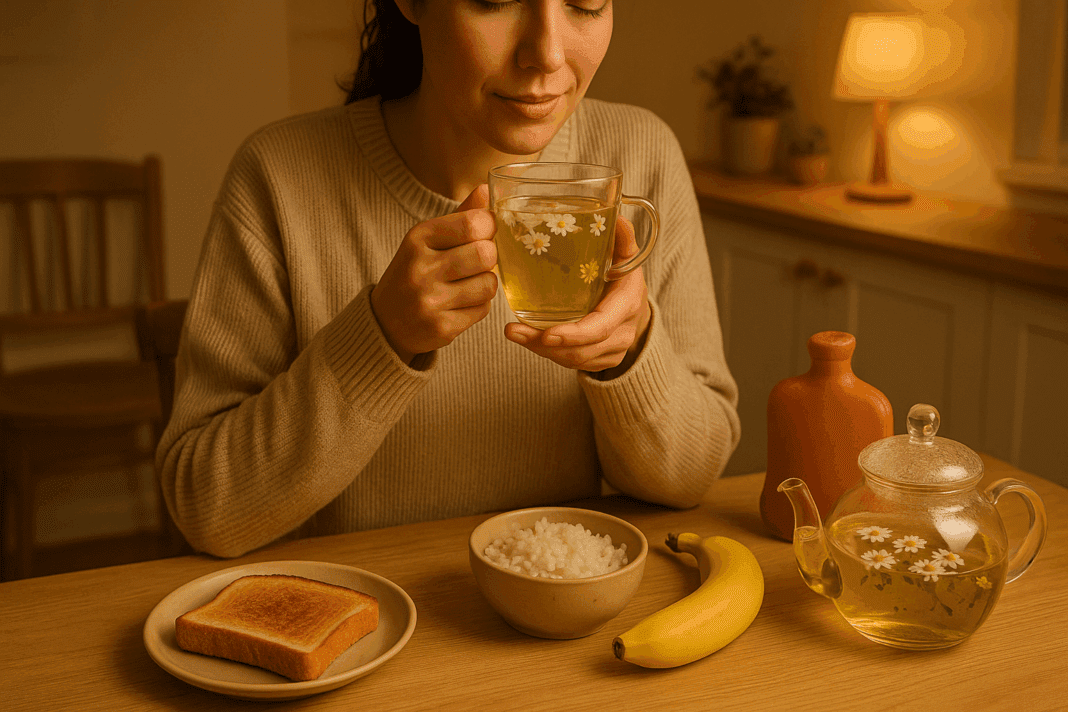Diarrhea, while common, can be both physically and emotionally taxing. Whether it’s the result of a viral infection, food intolerance, medication, or an underlying health condition, finding relief often begins with dietary choices. Understanding what to eat when you have diarrhea is essential for restoring hydration, easing gastrointestinal irritation, and supporting long-term gut healing. In this comprehensive guide, we explore foods that can help settle an upset stomach, the science behind how certain meals impact digestion, and how to create a soothing, balanced diet during recovery.
You may also like: The Ultimate Guide to Gut Healthy Meals: Best Meals for Gut Health and Nourishing Recipes You’ll Love
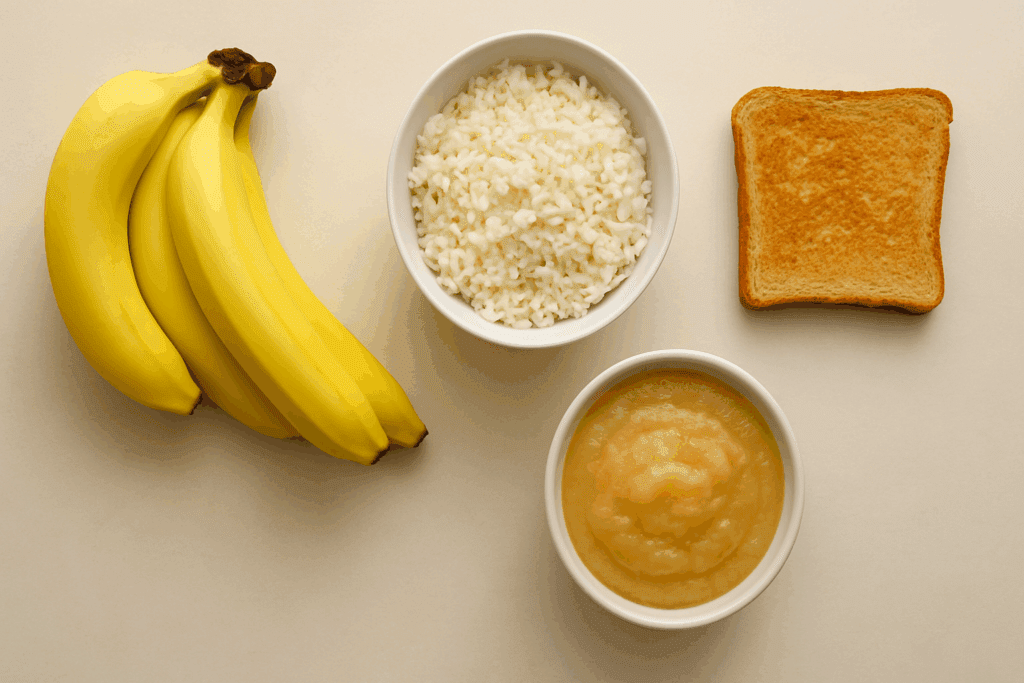
Understanding Diarrhea and Its Impact on Digestive Health
Diarrhea is defined as the frequent passage of loose, watery stools. Though it may seem like a simple inconvenience, persistent diarrhea can lead to serious complications such as dehydration, nutrient loss, and disruptions in gut microbiota. Acute cases often resolve within a few days, but chronic diarrhea may indicate conditions such as irritable bowel syndrome (IBS), inflammatory bowel disease (IBD), or infections requiring medical attention.
The digestive tract plays a critical role in absorbing fluids and nutrients. When the intestinal lining becomes inflamed or irritated, its ability to perform these functions is compromised. This results in increased fluid secretion and reduced absorption, culminating in the hallmark symptoms of diarrhea. Choosing the right diet for diarrhea becomes not just a matter of comfort, but a means of encouraging gut repair and systemic stability.
The BRAT Diet and Its Modern Adaptations
Traditionally, the BRAT diet—bananas, rice, applesauce, and toast—has been recommended for those experiencing diarrhea. These bland foods are low in fiber and gentle on the gastrointestinal tract. Bananas, for instance, contain pectin, a soluble fiber that helps absorb liquid in the intestines and can bulk up stool. They also provide potassium, an essential electrolyte lost during episodes of diarrhea.
White rice is easy to digest and can provide a source of energy without further irritating the gut. Applesauce offers a palatable way to get some nutrients and hydration, while toast, especially white bread, acts as a simple carbohydrate that is unlikely to exacerbate symptoms. However, modern nutrition science has suggested expanding this diet to include other easily digestible foods that support gut flora and replenish lost nutrients.

What to Eat When You Have Diarrhea: Gut-Friendly Foods That Heal
When evaluating what to eat when you have diarrhea, it’s important to focus on foods that are gentle, hydrating, and rich in nutrients that can help rebuild the gut lining. Steamed or boiled carrots, for example, offer a source of pectin and beta-carotene, supporting intestinal healing. Bone broth is another powerful remedy, as it provides essential amino acids like glutamine, which aids in repairing the intestinal wall.
Boiled potatoes without the skin provide an easily digestible source of carbohydrates and potassium. Scrambled eggs, preferably cooked without oil or butter, offer a mild source of protein that can support tissue regeneration. Yogurt with live cultures, especially those containing Lactobacillus acidophilus, can help restore the balance of beneficial gut bacteria that are often disrupted during bouts of diarrhea.
Best Foods for Diarrhea That Soothe the Digestive System
The best foods for diarrhea are those that supply nourishment without overburdening the gastrointestinal system. Cooked oatmeal, for instance, is frequently recommended for its gentle texture and soluble fiber content. A common question among those with digestive distress is, “Is oatmeal good for diarrhea?” The answer is a cautious yes—as long as it’s plain, cooked well, and free of added sugars or dairy, oatmeal can help provide both bulk and sustained energy.
Mashed bananas are another time-tested solution, providing pectin, potassium, and an easy texture. Skinless, boneless chicken that is baked or boiled without seasoning can deliver protein needed for cellular repair. Herbal teas like chamomile or ginger can help reduce inflammation and calm stomach spasms. Incorporating these best foods to eat if you have diarrhea into your meal plan can create a sense of comfort and stability during recovery.
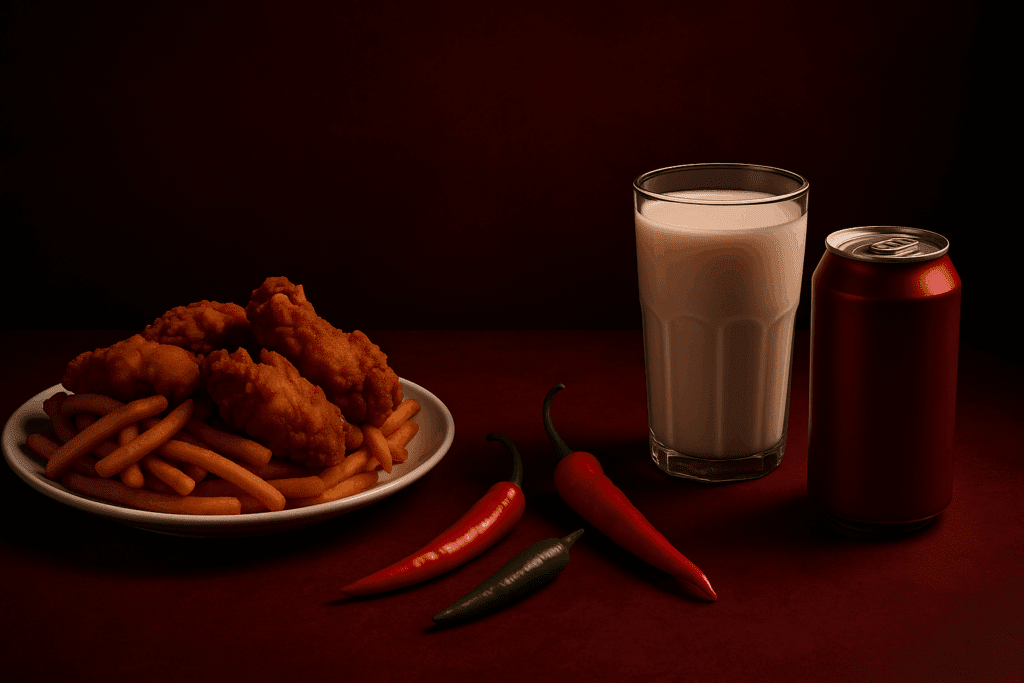
Avoiding Triggers: The Worst Foods to Eat With Diarrhea
Just as certain foods help soothe the gut, others can aggravate symptoms and prolong recovery. Identifying the worst foods to eat with diarrhea is crucial for managing flare-ups effectively. Fatty, greasy, or fried foods are notorious for worsening gastrointestinal distress. These items can speed up intestinal contractions and increase the fluid content of stool.
Dairy products are also commonly problematic, particularly for individuals with lactose intolerance, which can temporarily arise during or after an episode of diarrhea. Sugary foods and artificial sweeteners like sorbitol can draw water into the bowel, exacerbating loose stools. Spicy foods and caffeine-containing beverages may further irritate the gut lining, leading to increased discomfort. Highly fibrous vegetables, while healthy in many contexts, should be minimized during active symptoms due to their potential to worsen bloating and gas.
What to Eat With Diarrhea: Building a Balanced, Healing Meal Plan
A thoughtful, phased approach to eating during and after diarrhea can facilitate healing while preventing recurrence. In the early stages, prioritize hydration through clear fluids such as electrolyte-infused water, herbal teas, and diluted fruit juices. As the appetite returns, introduce bland, low-fiber foods like white rice, toast, and plain pasta.
Progress gradually by incorporating easily digestible proteins such as poached chicken or turkey. Over time, include well-cooked vegetables like zucchini, carrots, and spinach to enhance micronutrient intake without overwhelming the digestive system. Consider probiotic-rich foods like kefir, sauerkraut (in small amounts), and yogurt to help repopulate the gut microbiome. These foods to help with diarrhea not only provide relief but can contribute to long-term gut resilience.
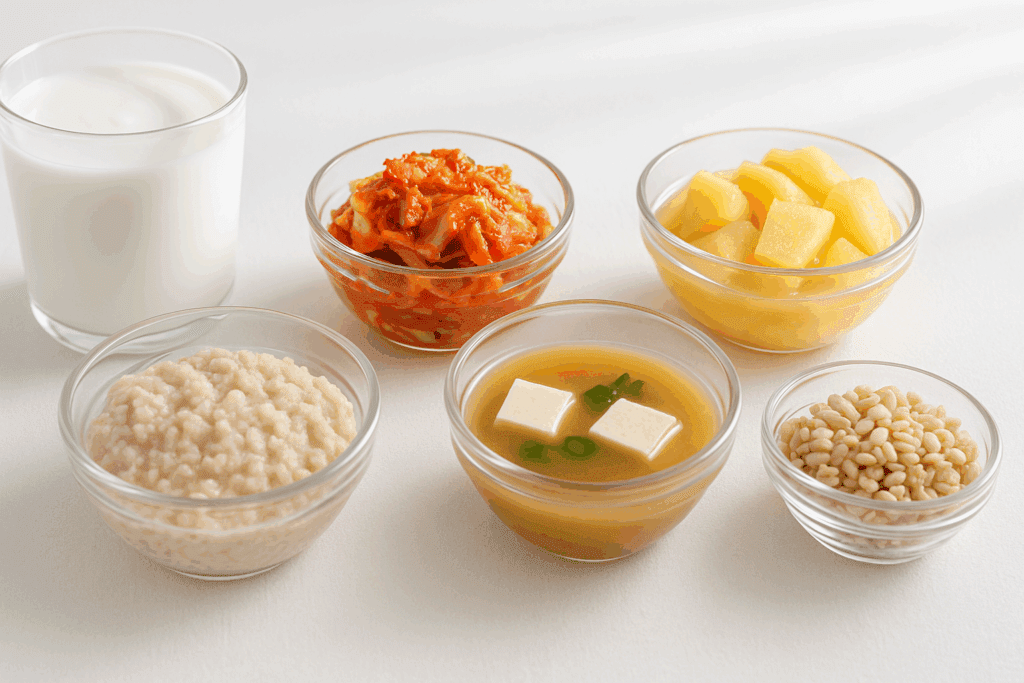
Addressing Common Questions: What Can I Eat to Stop Diarrhea?
One of the most frequently asked questions during a diarrheal episode is, “What can I eat to stop diarrhea?” While no food provides an immediate cure, some items may help reduce the severity and duration of symptoms. White rice, toast, and bananas are classic choices for a reason—they bind stool and replenish lost nutrients. Additionally, psyllium husk, when taken in small doses, can help normalize bowel movements by absorbing excess fluid.
Hydration remains key. Consuming oral rehydration solutions (ORS) ensures the body maintains an adequate balance of electrolytes, which can prevent the complications of dehydration. If diarrhea is caused by a bacterial imbalance, fermented foods with live probiotics may accelerate recovery. However, always consult with a healthcare professional before making significant dietary changes, especially if symptoms persist for more than a few days.
What to Eat for the Runs: Gentle Meals That Support Recovery
“The runs” is a colloquial term for diarrhea, and while the experience may vary in intensity, the dietary guidelines remain consistent. Soft-cooked grains like cream of rice or grits can be soothing, providing easily digestible energy. Incorporating applesauce, rich in pectin, may help firm up stools. Gentle sources of protein such as tofu or soft-boiled eggs support tissue repair without taxing the digestive tract.
Incorporating gelatin-based snacks can provide hydration and mild sweetness without adding fiber or fat. Avoid raw fruits and vegetables initially, as their high fiber content may increase bowel activity. Gradually transitioning to more complex meals should be guided by individual tolerance and symptom resolution.
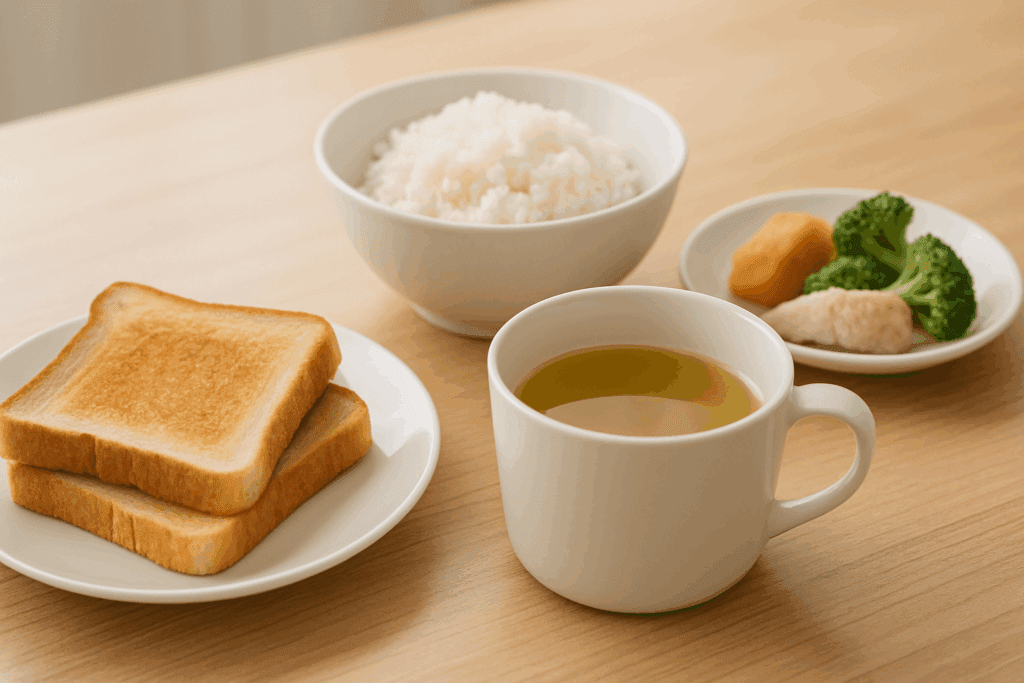
Foods for Diarrhea Relief: Harnessing the Power of Probiotics and Soluble Fiber
Probiotic foods and soluble fibers play a significant role in managing and preventing diarrhea. Live cultures found in yogurt, kefir, miso, and kimchi can help restore the natural balance of gut flora disrupted during illness. These beneficial bacteria not only enhance digestion but also play a key role in immune function and inflammation control.
Soluble fiber, found in foods like oats, barley, and cooked apples, can help bulk up stool by absorbing water in the colon. Unlike insoluble fiber, which can irritate an already sensitive digestive tract, soluble fiber is generally well-tolerated during recovery. This combination of beneficial microbes and gut-friendly fibers constitutes a powerful, holistic approach to managing diarrhea.
Diet for Diarrhea Recovery: Creating a Sustainable Gut-Health Strategy
Developing a diet for diarrhea should not end once symptoms resolve. The days following a diarrheal episode are critical for rebuilding gut integrity and preventing recurrence. A gradual reintroduction of foods, combined with mindful eating habits, can make a lasting difference. Start with small meals, chew thoroughly, and avoid overeating, which can strain the gut.
Incorporate cooked fruits like apples or pears, which offer fiber without harsh textures. Slowly introduce legumes and whole grains in modest portions to test tolerance. Avoid jumping straight into high-fat, spicy, or processed foods, even if cravings return. A long-term focus on gut health includes adequate hydration, fiber balance, and the inclusion of prebiotics and probiotics.
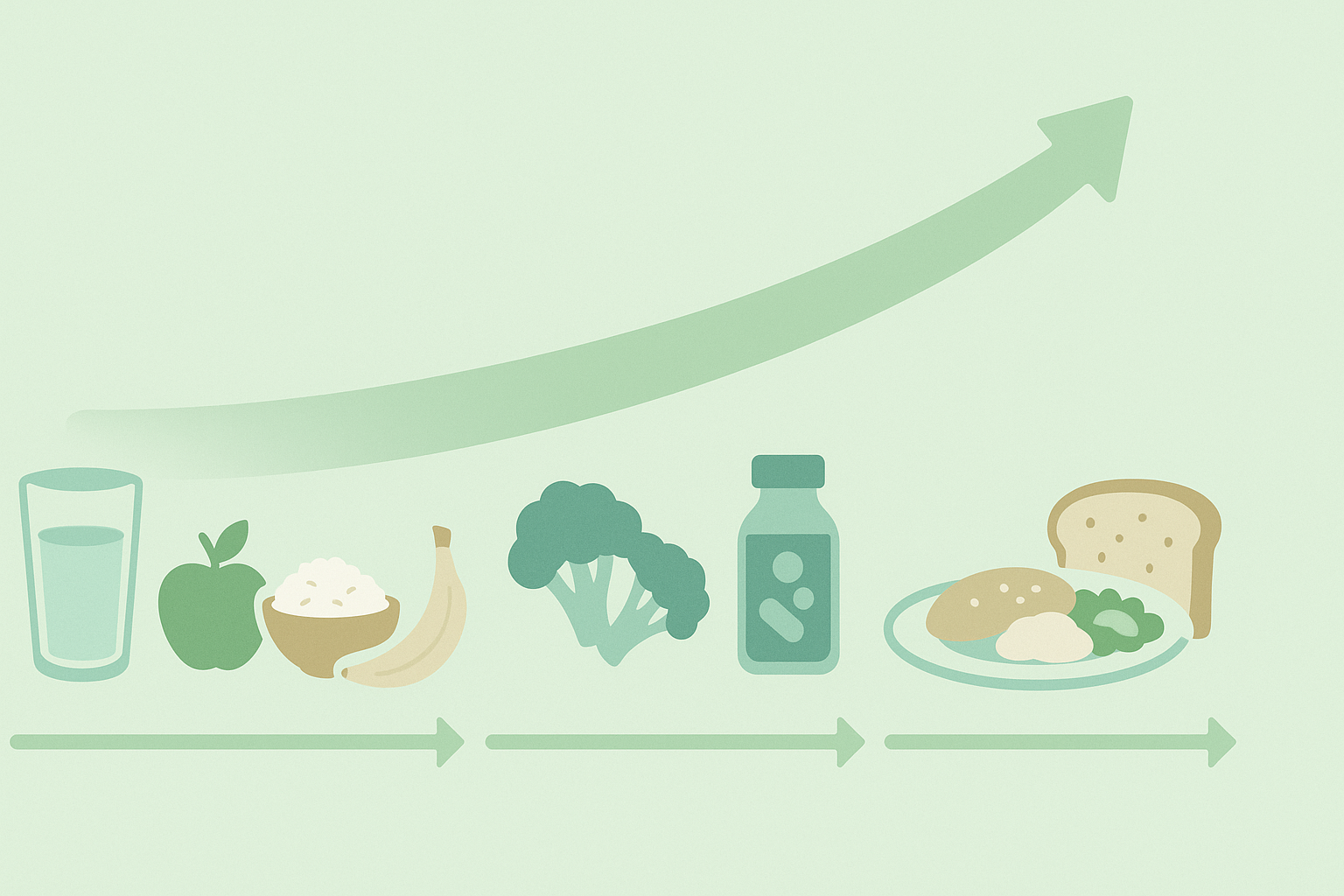
What to Eat to Settle an Upset Stomach: Foods That Calm and Restore
Sometimes, diarrhea is part of a larger picture of digestive discomfort. Knowing what to eat to settle an upset stomach can help calm symptoms before they escalate. Ginger, whether consumed as tea or chewed raw in small pieces, has anti-inflammatory and antispasmodic properties that ease nausea and abdominal pain. Peppermint, often consumed as tea, can relax the muscles of the gastrointestinal tract and reduce cramping.
A warm bowl of broth-based soup can provide both nourishment and hydration, especially when made with gut-healing ingredients like garlic, leeks, or celery. Crackers made from refined flour, while not nutritionally dense, may help settle a queasy stomach when little else is tolerated. Ultimately, the goal is to provide gentle sustenance while allowing the body time to restore its digestive balance.
What to Eat After Loose Bowel Movement: Reintroducing Nutrition Mindfully
After a loose bowel movement, the digestive system remains sensitive and requires time to return to equilibrium. Reintroducing food mindfully can make a significant difference in recovery. Begin with low-fiber, low-fat options that are easy to digest. Plain white toast, rice, and broiled or baked chicken are excellent starting points.
Avoid fibrous vegetables, dairy, and caffeinated beverages until several symptom-free meals have passed. Gradually adding cooked fruits and soft vegetables can help restore lost nutrients without overwhelming the gut. Maintaining a bland, well-cooked, and moderate diet for at least 24 to 48 hours post-symptoms ensures a smoother transition to regular eating habits.
Is Oatmeal Good for Diarrhea and an Upset Stomach?
Oatmeal often appears in discussions about digestive health, and with good reason. Rich in soluble fiber, particularly beta-glucan, oatmeal can help absorb excess liquid in the intestines and slow down bowel movements. For those wondering, “Is oatmeal good for diarrhea?” the answer is a conditional yes. When prepared plain, using water or a non-dairy milk substitute, and served warm, oatmeal can be both nourishing and gentle on the stomach.
The same goes for questions like “Is oatmeal good for an upset stomach?” Its soft texture and mild flavor make it an ideal choice during recovery. Add a sliced banana or a touch of honey for added nutrients and taste, but avoid dairy, sugar, or fruit with skin until symptoms fully subside. Oatmeal can act as a bridge food between acute symptoms and a return to a broader diet.
Can Consuming Fruits Help a Stomach Ache? Choosing the Right Fruits for Digestive Relief
Fruits can be both helpful and harmful depending on their fiber content and how they are prepared. Bananas, as noted, are excellent choices for their soluble fiber and potassium. Apples, when cooked or consumed as applesauce, offer pectin and mild sweetness without irritating the gut. Canned peaches and pears in juice (not syrup) can also be gentle options that offer hydration and nutrients.
Avoid citrus fruits, raw berries, and fruits with seeds or tough skins during active symptoms, as they can irritate the intestinal lining. Watermelon and papaya can be hydrating and soothing in small amounts. Ultimately, selecting the right fruits depends on the individual’s symptom severity and tolerance level, but when chosen wisely, fruits can provide gentle nourishment and aid recovery.
Frequently Asked Questions About What to Eat When You Have Diarrhea
What to Eat When You Have Diarrhea: Can Homemade Remedies Be as Effective as OTC Medications? While over-the-counter medications can provide rapid relief from acute symptoms, certain homemade remedies rooted in whole foods and traditional practices may offer comparable benefits without side effects. A warm banana and rice mash, for instance, provides both binding fiber and potassium, essential for restoring gut equilibrium. Ginger tea with a splash of lemon may soothe the intestinal lining while acting as a natural anti-inflammatory agent. Hydrating with coconut water can also replenish lost electrolytes and help regulate fluid balance. These foods to help with diarrhea often support healing without introducing artificial preservatives or fillers, which can sometimes irritate sensitive digestive systems.
Do Stress and Anxiety Impact What to Eat When You Have Diarrhea? Psychological stress can exacerbate gastrointestinal symptoms, including diarrhea, and should be considered when deciding what to eat. Cortisol, the stress hormone, can interfere with digestion and increase intestinal motility, making mild and comforting meals even more essential during episodes of emotional distress. Choosing the best food for upset stomach under stress involves incorporating calming ingredients such as chamomile-infused porridge or steamed oats with lavender syrup. It is also wise to avoid caffeine, which can spike anxiety levels and further irritate the gut. Stress-reducing eating rituals, like mindfulness and slow chewing, can enhance the effects of foods for diarrhea by helping regulate the brain-gut connection.
What Are the Best Foods to Eat If You Have Diarrhea During Travel? Traveler’s diarrhea often results from changes in water quality or exposure to unfamiliar pathogens. In such scenarios, knowing what foods stop diarrhea without worsening contamination risk is crucial. Dry snacks like plain crackers or shelf-stable oatmeal cups are ideal, especially when combined with sealed bottled water. Rehydration salts mixed with juice, and bananas purchased from reputable vendors, can help replenish electrolytes while providing energy. Yogurt cups with live cultures (if properly refrigerated) may also offer gut defense in unfamiliar environments. Being selective about what to eat with diarrhea while traveling can help reduce the risk of prolonged symptoms or dehydration.
Can Consuming Fruits Help a Stomach Ache Without Worsening Diarrhea? Many people wonder, can consuming fruits help a stomach ache without irritating the gut further? The answer lies in choosing fruits with low fiber and low acidity. Ripe bananas, peeled apples, and canned peaches in natural juice can be incredibly gentle and soothing. These fruits qualify as excellent food for upset tummy concerns while providing necessary vitamins and hydration. However, raw citrus fruits, grapes, or fibrous skins may intensify diarrhea, making it important to opt for stewed or mashed versions that are easier to digest. The best foods for diarrhea are those that marry nutrition with digestive gentleness, and certain fruits do this exceptionally well.
Is Oatmeal Good for Diarrhea in Children and Older Adults? For both children and older adults, oatmeal can be a nutritious staple that supports gentle digestion and restores energy levels. When prepared without milk and served with a bit of mashed banana or honey, it becomes a comforting food for upset stomach situations. However, portion control is key—too much fiber, even soluble fiber, may overwhelm sensitive systems. Pediatricians often recommend starting with smaller servings and observing stool consistency afterward. For elderly individuals, warm oatmeal not only soothes but also helps prevent dehydration due to its water-absorbent nature. As such, oatmeal is often included among the best foods to eat if you have diarrhea regardless of age.
What to Eat When Your Stomach Is Upset: Are Herbal Supplements Effective Additions? Incorporating herbal remedies into a diet for diarrhea can provide anti-inflammatory and anti-spasmodic benefits. Slippery elm bark, for instance, forms a mucilaginous gel that can coat and protect irritated digestive tracts. Peppermint oil capsules may relieve bloating and cramping, particularly when paired with low-residue meals like rice or applesauce. Additionally, turmeric can be blended into rice or soup to harness its gut-calming effects without overwhelming the system. When paired with foods you can eat when u have diarrhea, these herbal supplements enhance the healing process holistically. As always, medical consultation is essential before starting any supplement, particularly during digestive distress.
What to Eat for the Runs: Are There Benefits to Intermittent Fasting During Recovery? When exploring what to eat for the runs, it’s worth examining the potential role of intermittent fasting. Short-term fasting, or structured periods of reduced intake, may allow the gut to rest and regenerate. For individuals with acute, non-severe diarrhea, skipping a meal and hydrating with warm broths or electrolyte fluids may decrease intestinal inflammation. Once food is reintroduced, the body may respond better to gentle meals like boiled chicken and white rice. However, intermittent fasting is not suitable for everyone, especially children, pregnant women, or individuals with chronic illness. Thoughtful guidance from a healthcare provider can help determine if fasting complements your diet for diarrhea recovery.
What to Eat After Loose Bowel Movement to Rebuild Gut Flora? After experiencing a loose bowel movement, your body needs support to restore microbial diversity and gut lining strength. Foods to eat when you have diarrhea should transition gradually to include prebiotics like cooked garlic, leeks, or onions, which feed healthy bacteria. Including soft fermented foods such as miso, low-sodium pickles, or yogurt with live cultures can aid microbial recolonization. Bone broth and gelatin-based soups contribute collagen and glycine, supporting tissue repair in the intestinal lining. A post-diarrhea meal plan also benefits from zinc-rich foods such as pumpkin seeds and lean meats to support immune defense. Creating a recovery-focused diet that includes these elements reduces relapse risk and promotes resilience.
What Are the Worst Foods to Eat With Diarrhea When Managing IBS or IBD? Individuals with chronic digestive conditions like IBS (Irritable Bowel Syndrome) or IBD (Inflammatory Bowel Disease) need to avoid common irritants that might not bother others. The worst foods to eat with diarrhea in this context include legumes, cruciferous vegetables like cauliflower, and allium-rich items such as onions. These can ferment in the gut, causing bloating and urgency. Fried foods and dairy products, especially soft cheeses, can also trigger inflammatory flares. Alcohol, carbonated beverages, and even certain fruits like watermelon may be too high in fermentable sugars (FODMAPs). Understanding individual food sensitivities and combining that knowledge with a list of foods to settle stomach discomfort can be transformative in long-term management.
What Foods Make Your Stomach Feel Better Without Slowing Down Metabolism? Some individuals worry that following a bland diet may lead to reduced metabolic rate or lethargy. The good news is that several foods to settle stomach issues can also support steady energy levels. Poached eggs, for example, provide high-quality protein without taxing digestion. Steamed root vegetables like carrots and beets offer complex carbs while helping regulate bowel function. Sipping on fennel or anise tea may calm the stomach while gently stimulating metabolism. Incorporating nutrient-dense foods that are low in fat and fiber ensures that your body continues to function optimally. In this way, what food makes your stomach feel better can also support overall wellness.
Conclusion: Embracing a Holistic Diet for Diarrhea Relief and Long-Term Gut Health
Navigating what to eat when you have diarrhea requires more than temporary food choices; it demands a holistic, responsive approach to gut health. From the first bite of banana or sip of bone broth to the gradual reintroduction of fibrous foods and probiotic-rich items, every decision contributes to your body’s ability to heal and reset. Understanding the best foods for diarrhea, avoiding harmful ingredients, and incorporating gut-friendly habits help ensure not only faster relief but long-term wellness.
With careful attention to hydration, mindful meal planning, and a focus on foods that nurture rather than challenge the gut, individuals can transform an uncomfortable episode into an opportunity to improve their digestive resilience. Whether you’re seeking relief from a sudden upset or aiming to prevent future occurrences, a strategic, nourishing diet rooted in holistic supplements and gut health wisdom remains your most powerful ally.
Further Reading:
What to Eat When You Have Diarrhea

